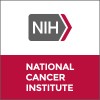
A Comparison of Atazanavir and Nelfinavir, Each in Combination With 2 NRTIs, in Patients Who Have...
HIV InfectionsThe purpose of this study is to compare the atazanavir and nelfinavir (NFV) treatments in their ability to reduce viral load.

The Safety and Effectiveness of Didanosine Plus Stavudine Plus Delavirdine Mesylate Plus MKC-442...
HIV InfectionsThe purpose of this study is to see if it is safe and effective to give MKC-442, didanosine (ddI), stavudine (d4T), and delavirdine (DLV) to HIV-positive patients.

Characteristics and Outcomes of Patients Who Received Etravirine and/or Darunavir
HIV/AIDSThe objectives of this data collection activity are to: Describe the baseline demographics, clinical and laboratory profile of patients who ever received darunavir (DRV) and/or etravirine (ETR), at the time of initiation on DRV and/or ETR; Describe the clinical and laboratory profile of patients who ever received DRV and/or ETR every 6 months from the first data collection point through 2021; Describe dynamics in HIV drug resistance mutations among patients who fail treatment on new regimens including DRV and/or ETR; Describe demographics, clinical and laboratory profile of young adults who transition out of the donation program after the age of 25 years at 12 months after their transition.

Instacare - Rapid ART Initiation Among Persons With HIV and Out of Care
HivHIV InfectionsThis study aims to evaluate two ways to help people re-engage with healthcare. The first is to assess if providing HIV treatment on the first visit (or within 1 week) can help people re-engage with care and ultimately stay in care after 24 and 48 weeks. It will also assess the success of starting treatment immediately by measuring the HIV virus in people's bloodstream after 24 and 48 weeks. The second part of this study is to assess a new behavioral treatment called 60-Minutes-for-Health which aims to help people identify and overcome barriers to HIV care, to help with motivation maintaining in care, to help cope with negative feelings about HIV, and to help increase self-reliance in seeking healthcare amid other things that are happening in your life.

Efficacy, Tolerability and Acceptability of Biktarvy by TPLWH
Human Immunodeficiency VirusThis is a clinical trial for TPLWH (Trans People Living with HIV) who are stable on cART with an undetectable viral load or a detectable viral load but no resistance to NRTIs and InSTI. Following written consent and screening procedures, study subjects will undergo a switch (or will restart) of their combination antiretroviral therapy (cART) to Biktarvy. The goal of this research project is to recruit an understudied population into a controlled clinical trial aimed at optimizing TPLWH cART. This will be demonstrated by measuring viral load outcomes at regular intervals, with a focus on viral load results 48 weeks after Biktarvy initiation (primary outcome).

Cardiometabolic Effects of Eplerenone in HIV Infection
Cardiac SteatosisHepatic SteatosisBackground: People with human immunodeficiency virus (HIV) are at a high risk of getting visceral or deep belly fat. Visceral fat can cause health problems like heart or liver disease. Researchers want to see if a blood pressure drug can help by blocking a hormone in the body. Objective: To see if eplerenone reduces fat stored in the heart muscle and liver in people with HIV and increased visceral fat. Eligibility: Adults ages 18 75 with HIV and increased waist circumference. Increased waist circumference is defined as more than 40 inches in men and more than 35 inches in women. Design: Participants will be screened with: Physical exam Medical history Blood tests Measurements of hips, waist, legs, arms, shoulders, and neck Magnetic resonance imaging (MRI) scan. They will lie on a table that slides into a machine. Electrocardiogram (EKG) to measure heart electrical activity Transient elastography, a special ultrasound to measure liver tissue stiffness A small piece their liver collected (optional) Participants will have a baseline visit: Physical exam Medical history Blood tests DEXA scan to measure body fat, muscle mass, and bone density. Participants will lie on a table while a very small dose of x-rays goes through the body. Resting energy expenditure (REE). This measures the amount of oxygen breathed in and carbon dioxide breathed out. Participants will get a 1-week supply of eplerenone. They will take one pill per day. Participants will have a follow-up visit 1 week later. They will have: Physical exam Medical history Blood tests 23-week supply of eplerenone Participants will have 5 more follow-up visits. Participants will have a final study visit, repeating many of the screening and baseline tests.

iHIVARNA Clinical Trial in HIV Infected Individuals
HIV InfectionsiHIVARNA-01 is a novel therapeutic vaccine for the treatment of HIV-1-infected patients based on in vivo modification of DCs. It consists of HIVACAT-TriMix: mRNA encoding a mixture of APC activation molecules (CD40L, a constitutively active variant of TLR4 and CD70) and the HIV target antigens contained in HIVACAT to be administered through the intranodal route. iHIVARNA-01 aims to achieve the 'functional cure' of HIV infection, i.e. controlling viral replication in the absence of anti-retroviral therapy.

Pharmacokinetic Interaction Between Nevirapine and Saquinavir-sgc in HIV-1 Infected Patients
HIV InfectionsThe objectives of this study are to determine the effects of nevirapine on the steady-state pharmacokinetics of saquinavir-sgc and to determine the effects of saquinavir-sgc on the steady-state pharmacokinetics of nevirapine. This study will also evaluate the pharmacokinetics of nevirapine in combination with saquinavir-sgc compared to historical controls treated with nevirapine but without saquinavir-sgc.

A Study of the Neurological Effects of Adding Raltegravir to HAART Regimen in Patients With HIV...
Human Immunodeficiency Virus (HIV)HIV Associated Neurocognitive Disorders (HAND)HIV related cognitive impairment still occurs despite highly active antiretroviral therapy (HAART). HIV disease affects the brain in 20-40% of patients with advancing HIV disease leading to varying degrees of cognitive impairment, recently termed HIV associated neurocognitive disorders (HAND). HAND may occur in patients who are virally suppressed in both blood and CSF. Patients with HIV Associated Neurological Disorders (HAND) who are virally suppressed in both their blood and cerebrospinal fluid (CSF), whilst on a highly active antiretroviral therapy (HAART) regimen may have significant cognitive improvement with HAART intensification with the medication Raltegravir; compared to those who remain on their existing regimen. This study will be a prospective, interventional, randomised and unblinded controlled clinical trial. The aim of this study will be to determine whether HAART intensification with the medication Raltegravir, leads to significant improvement in HIV associated neurological disorders (HAND). Patients with the recent progression (within 6 months) of HAND (validated by neuropsychological assessment) on HAART who are virally suppressed (<50 copies per ml) in blood and CSF will be randomised to have their existing HAART regimen intensified with raltegravir 400mg twice daily, or not. The control arm will remain on their medication regimen as prescribed. The target is to enrol 110 patients into the control group, and 110 patients into the Raltegravir intensification group. Patients will undergo baseline neuropsychological testing, MRI, blood tests, and cerebral spinal fluid (CSF) tests (via a lumbar puncture). The methods used to determine the effectiveness of adding Raltegravir, will include further neuropsychological testing at 6 months; and neuropsychological testing, MRI and CSF assessment at 12 months. Neuropsychological testing completed at 6 and 12 months will be completed by a "blind assessor", in that they will have no knowledge of which arm (treatment or control) the participant is enrolled in. An evaluation (neuropsychological testing) will be performed should the patient deteriorate during the course of the study, as recognised by the patient's managing physician. The decision of the Antiretroviral medication regimen to be used in such a case will be determined by the managing physician. At the end of the study protocol (12 months) the patient's HAART therapy will be managed by their primary physician.

Erlotinib Hydrochloride in Treating Non-Small Cell Lung Cancer That is Metastatic or Cannot be Removed...
HIV InfectionRecurrent Non-Small Cell Lung Carcinoma3 moreThis phase I trial studies the side effects and best dose of erlotinib hydrochloride in treating non-small cell lung cancer that has spread to other parts of the body or cannot be removed by surgery in patients with human immunodeficiency virus (HIV) infection. Erlotinib hydrochloride may stop the growth of tumor cells by blocking some of the enzymes needed for cell growth. Erlotinib hydrochloride is a standard drug used for treating lung cancer, however, it is not yet known whether it is safe to give erlotinib hydrochloride to patients who also have HIV infection or not.
